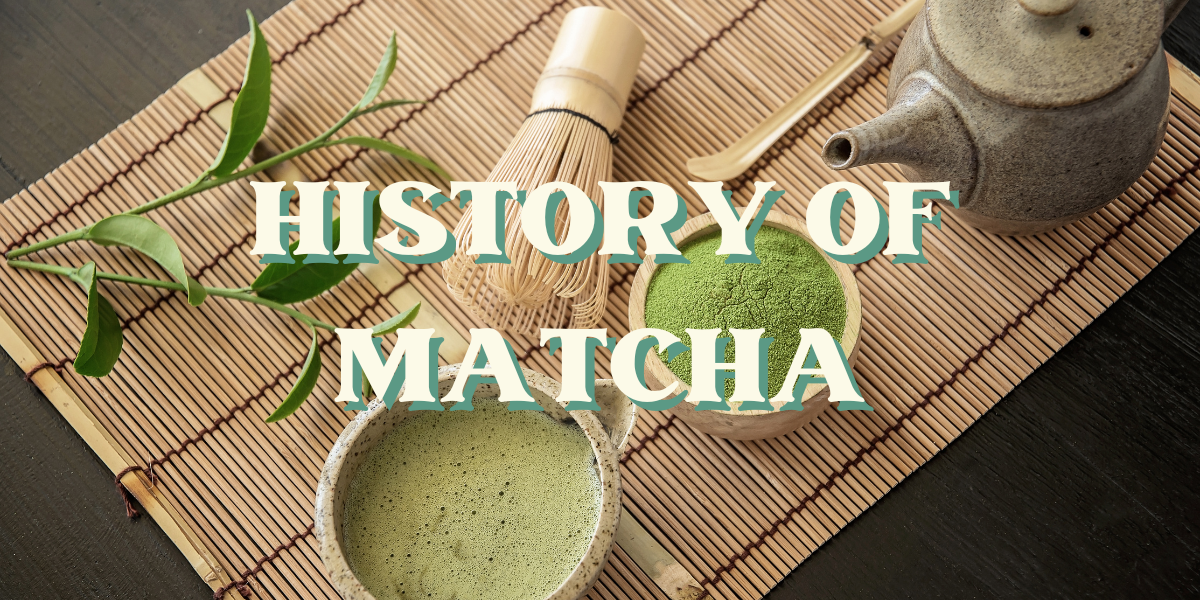

Here at Pow, we're big matcha fans. In fact, our first product (and all of our products as of today) use matcha as the main component.
Like anything, the quality of matcha you find at your local coffee shop (or local Starbucks) can vary widely. The more you learn about matcha, and it's history, the more you'll come to appreciate how incredible it is, and how to distinguish between the quality of different types of matcha you find.
This article is on the History of Matcha, but soon we will go more in depth on matcha grading, but this article on matcha has a little bit about it.
Here at Pow, we work specifically with farms in Uji, Japan that still use traditional growing and processing techniques (like stone grinding and shade growing). This is a huge reason why our Wonder Matcha is so good.
This post is a relatively brief overview of history of matcha.

If you're looking for a quick read, you can just read this for the quick hits. We'll expand on this below.

Many people rightly associate matcha with Japan, because the process of creating matcha as we know it was perfected and is still extremely popular in Japan.
But, the real history of powdered tea starts in China, during the Tang Dynasty (618 - 907). This is the origins of roasting and pulverizing tea leaves, which were then decocted. Decoction is essentially boiling the tea in water so that it dissolves (think: Turkish Coffee).
During the Song Dynsasty in China, the method of actually whipping the tea powder with hot water was popularized.
Chan Buddhists actually ritualized this method of making tea into a tea ceremony. This ties to how matcha grading works today, where ceremonial grade matcha is high enough quality to be used in tea ceremonies.
In 1191, a Japanese Buddhist monk named Esai brought this method of preparing Matcha to Japan, along with a new form of Zen Buddhism.
Matcha actually means "powdered tea" in Japan.

(Photo credit to The Culture Trip)
Powdered green tea may have been invented in China, but matcha became a uniquely Japanese beverage because of the unique growing and production process used in Japan.
Zen Buddhist monks began perfecting the growing techniques, and even bred their tea plant to contain superior characteristics.
For example, by shade growing the tea leaves in the pre-harvest season, the tea developed high-levels of focus boosting amino acids (L-theanine), improved the flavor and reduced bitterness, and created very high levels of antioxidants in the tea. The tea produced by using this method of growing leaves, and then drying them flat is known as Tencha. Then Matcha is the powder produced from Tencha.
The uplifting and also calming effect of the matcha was the perfect drink to help the monks sit through a long meditation practice.
These traditional techniques are still used today, especially by traditional matcha tea farmers like the ones we work with.
The Japanese Tea Ceremony is known as sadō/chadō (or cha-no-yu) which is translated as "The Way of Tea".
In the 1500's a Zen student named Murata Juko brought together the pillars of the tea ceremony which included the cultivation techniques, consumption, and ceremony.

Then, Zen Master Sen-no-Rikyu popularized and solidified the tea ceremony developed by Murata Juko. Rikyu created the four basic principles of the Japanese Tea Ceremony:
For this article we're going to leave it here. But, look out for a lot more from us. You can also sign up for our weekly(ish) newsletter where we'll send more more content like this.
Drop a comment and shoot us a question or just say hi!
Want to try our matcha? Checkout Wonder Matcha here.
Enjoyed learning about the history of Matcha, interesting article, thank you!
Linda on